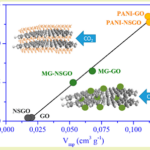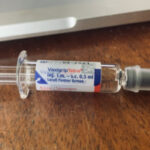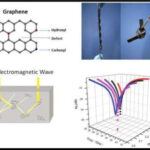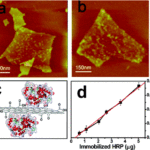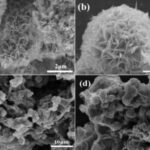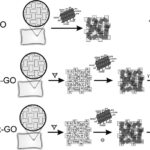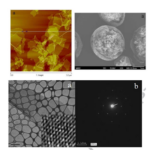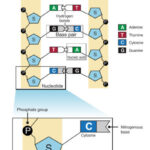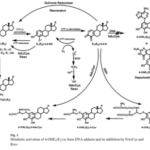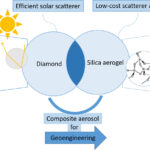November 1, 2024 Graphene, Scientific alternative studies
This may be the explanation for the “vaccinees'” loss of reality, neural problems, Bell’s palsy, and in general all the side effects that have affected the neural system.
Reduced graphene oxide and effects on the central nervous system
“The results so far indicate that reduced graphene oxide has the potential to transport drugs into the brain or to open the blood-brain barrier and allow other vehicles to transport the drugs themselves into the brain”, says Dr. Da Cruz-Höfling.
A telling quote from a 2017 study conducted by the Faculdade de Ciências Médicas (FCM). Universidade Estadual de Campinas (UNICAMP). Campinas, SP, Brasil.
Of course, the elites have long been in search of a way to control people’s minds.
Then watch this video to make sure you don’t miss anything.
Going back to the 2017 study I just mentioned – whose main steps I’ll report on later – it started with the possible use of graphene oxide and then switched to rGO (reduced graphene oxide) because, according to researcher Dr. Da Cruz-Höfling, “it improved the properties of the nanomaterial and is water soluble“.
Heridea was that the nanomaterial would interact with neurons and astrocytes, as well as the endothelial cells that line the vessels of the brain’s microcirculation.
They tested rGO in rats, administered intravenously, and found that the nanomaterial affected the blood-brain barrier, temporarily promoting its opening for one to three hours.
The rGO was mainly concentrated in the thalamus and hippocampus.
This could explain the loss of reality, neural problems, Bell’s palsy and in general all the side effects affecting the neural system of the “vaccinees”.
Reference study
Maria Alice da Cruz Höfling, Monique Culturato Padilha Mendonça : Óxido de grafeno e sistema nervoso central : avaliação dos efeitos na barreira hematoencefálica e perfil nanotoxicológico = Graphene oxide and the central nervous system : analysis of effects on the blood-brain barrier and nanotoxicological profile, 2017, Faculdade de Ciências Médicas (FCM). Universidade Estadual de Campinas (UNICAMP). Campinas , SP, Brasil (nº 12/24782-5)
Facts analyzed
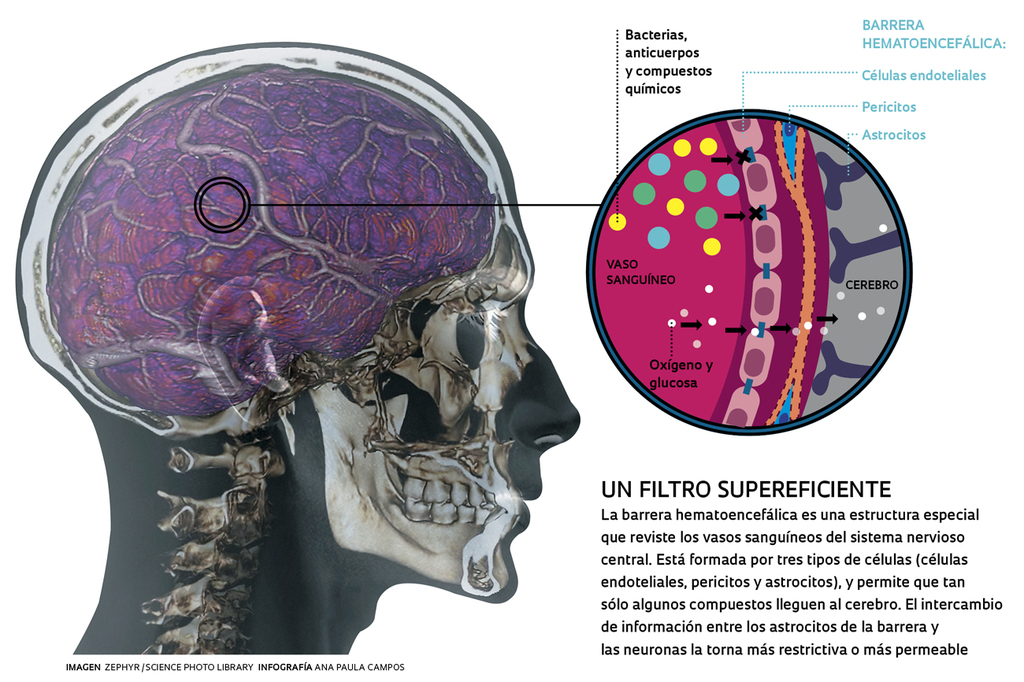
The blood vessels that supply the central nervous system are lined with a special structure composed of three types of cells that together act as a very selective filter.
This structure, called the blood-brain barrier, allows only certain compounds necessary for proper brain function, such as nutrients, hormones, and gases, to pass through.
This selectivity protects the central nervous system from toxic molecules in the blood and also prevents a drug ingested orally, or injected into the bloodstream, from reaching the brain, even when it is needed.
At the University of Campinas (Unicamp), researchers (Mendonça M.C.P. ; Soares E.S. ; De Jesus M.B.; Ceragioli H.J. ; Sakane, K.K.; da Cruz Höfling M.A., 2016) tested the possibility of using reduced graphene oxide – which, let me remind you, is a nanostructured compound made of carbon atoms – to open this barrier and allow certain drugs to reach the brain with fewer side effects than those caused by the compounds currently in use.
According to the researchers, “initial tests with reduced graphene oxide have been promising”.
Experiments with cells and laboratory animals showed that this compound temporarily opens the barrier.
Later, in a subsequent study (Mendonça M.C.P. ; Soares E.S. ; De Jesus M.B.; Ceragioli H.J. ; Sakane, K.K.; Da Cruz-Höfling M.A., 2016) they reported the following result : “We worked with this compound because nanomaterials of the graphene family had the potential to interact with the nervous system, since graphene is an excellent conductor of electricity and neuronal cells communicate with each other through electrical impulses“.
Graphene, which consists of a single layer of carbon atoms arranged in regular hexagons, is 200 times stronger than steel and is one of the best electrical conductors known.
However, pure graphene has limited biological applications because it is poorly soluble in water.
Reduced graphene oxide, on the other hand, dilutes in water and retains electrical properties similar to those of the material.
Mendonça was introduced to reduced graphene oxide in 2013, during a conversation with scientists at the Nanoengineering and Diamonds Laboratory at Unicamp’s Faculty of Electrical and Computer Engineering (FEEC), and decided to evaluate its potential to break the barrier.
“We adapted the production process of this material to synthesize it without the need for intermediate chemical processes and increase its purity to about 99 percent“, says FEEC researcher Helder Ceragioli.
The production methods described in the scientific literature often leave behind impurities (iron, tungsten or nickel atoms) that can be toxic. According to theoretical predictions, the purer the reduced graphene oxide, the lower the risk of damage to living tissue.
In the experiments, Mendonça injected graphene oxide into the rats’ bloodstream and, using techniques that allow the compound to be tracked in the body, observed that an hour later, it had already penetrated brain structures such as the hippocampus and thalamus.
By detecting a reduction in the levels of proteins that hold the cells lining the blood vessels together, he concluded that the reduced graphene oxide had opened the barrier by creating space between the cells that make it up.
Mendonça also noted that the barrier closed again a few hours after inoculation with the compound.
The Unicamp group is currently studying possible biochemical mechanisms that would be activated in the cells to open the barrier.
Neurons preserved
Seven days after application, most of the compound had already been eliminated from the body, suggesting that the compound does not tend to accumulate and become toxic to cells.
Further tests showed that there was no neuronal death in the treated rodents and that brain morphology remained intact.
Nor did the material cause damage to blood cells or other organs such as the liver and kidneys.
In addition, reduced graphene oxide appears to have advantages over compounds such as mannitol, which doctors use to open the blood-brain barrier.
“Reduced graphene oxide is potentially safer than mannitol, which alters fluid flow in the central nervous system and can leave neurons susceptible to damage, as well as alter kidney function, ” says Licio Velloso, a physician at Unicamp’s Faculty of Medical Sciences (FCM).
Velloso studies changes in the body that alter barrier permeability and considers reduced graphene oxide a promising candidate to perform this function.
“However, the pharmacological use of nanoparticles is still in its early stages and more studies are needed to see if they cause long-term side effects.”
“The results so far indicate that reduced graphene oxide has the potential to transport drugs into the brain or to open the blood-brain barrier and allow other vehicles to transport the drugs themselves into the brain,”, says Da Cruz-Höfling, who began studying ways to penetrate the blood-brain barrier 20 years ago when she was studying the effects of the venom of spiders of the genus Phoneutria (the Brazilian wandering spider or banana spider).
“Because people bitten by these spiders showed neurotoxic symptoms, I assumed that the venom could cross the barrier“, he recalls.
Later, the researcher found that low doses opened the barrier in rats. Faced with the difficulty of isolating the component of the venom responsible for this effect, he continued to test other compounds.
Despite the encouraging results, it is too early to say whether reduced graphene oxide can be used in clinical practice.
First, it must be determined whether it is safe for humans and whether it actually allows other compounds to reach the brain more effectively.
Final Thoughts
The pharmacological treatment of neurological disorders has historically been complicated by the inability of drugs to cross the blood-brain barrier (BBB).
The BBB is essential for maintaining the homeostasis of the central nervous system (CNS), but it is the main obstacle for drug access to the neural microenvironment because it has structural and molecular features that limit the permeation of xenobiotics.
In this context, nanotechnology can offer an innovative solution through the use of nanocarriers of genes, drugs or biomolecules.
Among the different types of nanoparticles (NPs), carbon NPs, such as graphene oxide (GO), are products of great interest in nanotechnology because their unique physicochemical properties offer a wide range of biological applications, including interfacing with components of neural systems.
The study just reviewed verified the ability of GO suspended in different vehicles (water and polyethylene glycol) to cross the HEB in rats, as well as assessing the toxicity of the two types of NPs in neural tissues.
Understanding the mechanisms involved has certainly contributed to the development of useful tools for clinical intervention, and may also be relevant to understanding the mechanisms related to HEB function.
Biblography
1.Mendonça , M. C. P.; Soares, E. S.; De Jesus, M. B.; Ceragioli, H. J.; Sakane, K. K.; Da Cruz-Höfling, M. A. Raman Spectroscopy as a Tool to Evaluate Brain Tissue Composition After Administration of Reduced Graphene Oxide. Journal of Applied Spectroscopy, v. 83, n. 5, p. 805-810, NOV 2016. Citações Web of Science: 2.
2.Mendonça M.C.P. ; Soares E.S.; De Jesus M.B.; Ceragioli, H.J.; Batista A.G.; Nyul-Toth, A.; Molnar, J.; Wilhelm, I.; Marostica Jr., M.R.; Krizbal, I.; Da Cruz-Höfling, M. A. PEGylation of Reduced Graphene Oxide Induces Toxicity in Cells of the Blood-Brain Barrier: An in Vitro and in Vivo Study. Molecular pharmaceutics, v. 13, n. 11, p. 3913-3924, NOV 2016. Citações Web of Science: 19.
3.Soares, E.S.; Stavale, L.M..; Mendonça M.C. P.; Coope, A.; Da Cruz-Höfling, M. A. Age-Related Modulations of AQP4 and Caveolin-1 in the Hippocampus Predispose the Toxic Effect of Phoneutria nigriventer Spider Venom. International journal of molecular sciences, v. 17, n. 11 NOV 2016. Citações Web of Science: 0.
4.Mendonça , M.C.P.; Soares, E.S.; De Jesus, M.B.; Ceragioli, H.J.; Irazusta, S.P.; Batista, A.G.; Ramirez Vinolo, M.A.; Marostica Jr., M.R. ; Da Cruz-Höfling, M. A. Reduced graphene oxide: nanotoxicological profile in rats. Journal of nanobiotechnology, v. 14, JUN 24 2016. Citações Web of Science: 15.
5.Soares, E.S.; Mendonça , M.C.P.; Da Cruz-Höfling, M. A.. Caveolae as a target for Phoneutria nigriventer spider venom. NeuroToxicology, v. 54, p. 111-118, MAY 2016. Citações Web of Science: 5.
6.Soares, E.S.; Mendonça , M.C.P.; ; De Jesus, M.B. ; Ceragioli H.J.; Ferreira, M.S.; Catharino, R.R.; Da Cruz-Höfling, M. A.Reduced graphene oxide induces transient blood-brain barrier opening: an in vivo study. Journal of nanobiotechnology, v. 13, OCT 30 2015. Citações Web of Science: 31.
7.Soares, E.S.; Mendonça , M.C.P.; Da Cruz-Höfling, M. A. eNOS uncoupling in the cerebellum after BBB disruption by exposure to Phoneutria nigriventer spider venom. Toxicon, v. 104, p. 7-13, SEP 15 2015. Citações Web of Science: 7.
8.Soares, E.S.; Mendonça , M.C.P.; Stavale, L.; Kalapothakis, E.; Da Cruz-Höfling, M. A. Vascular Endothelial Growth Factor Increases during Blood-Brain Barrier-Enhanced Permeability Caused by Phoneutria nigriventer Spider Venom. Biomed Research International, 2014. Citações Web of Science: 6.
9.Mendonca, Monique Culturato Padilha. Graphene oxide and central nervous system: evaluation of effects on blood brain barrier and nanotoxicological profile.. 2016. Tese de Doutorado – Universidade Estadual de Campinas, Faculdade de Ciências Médicas.

